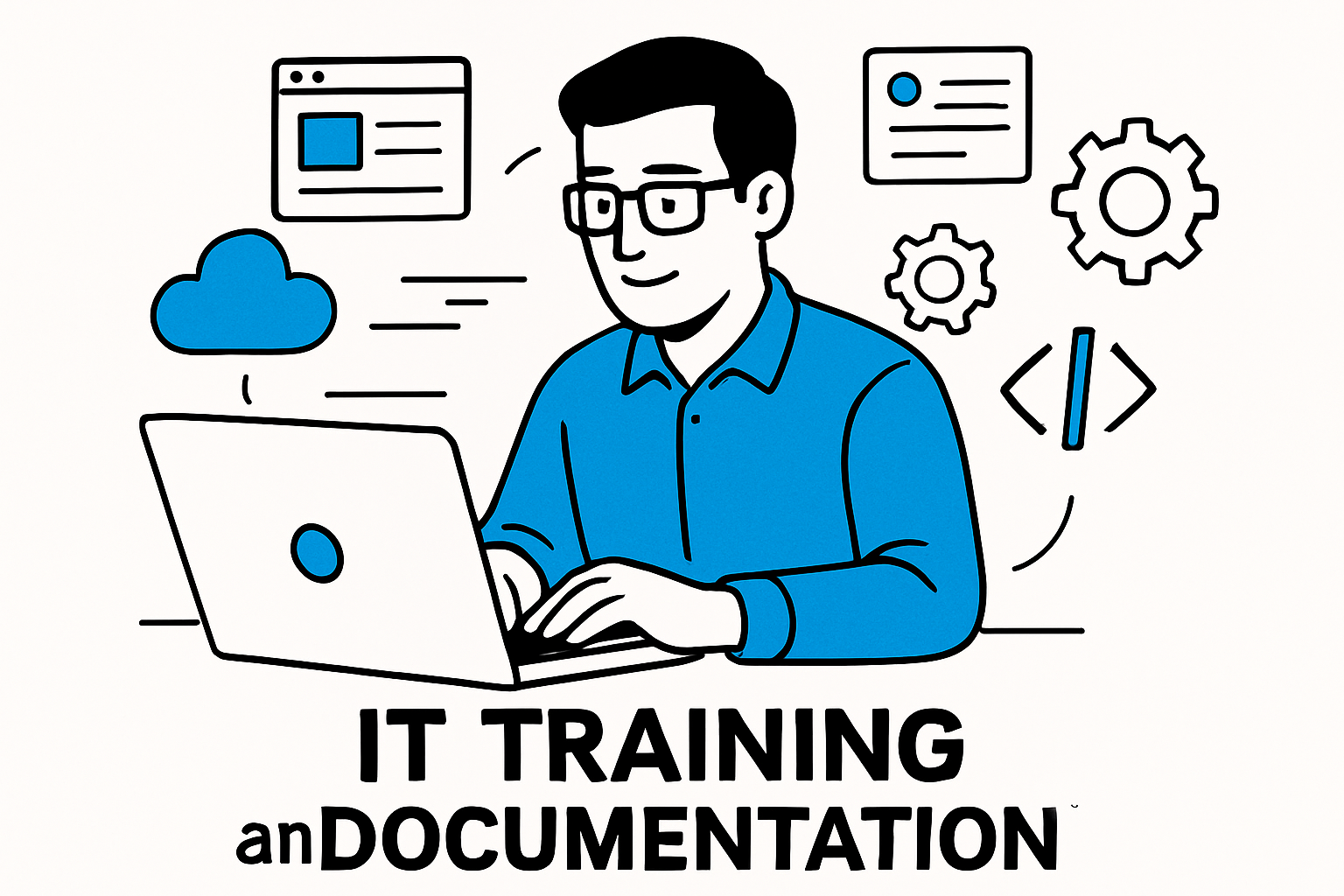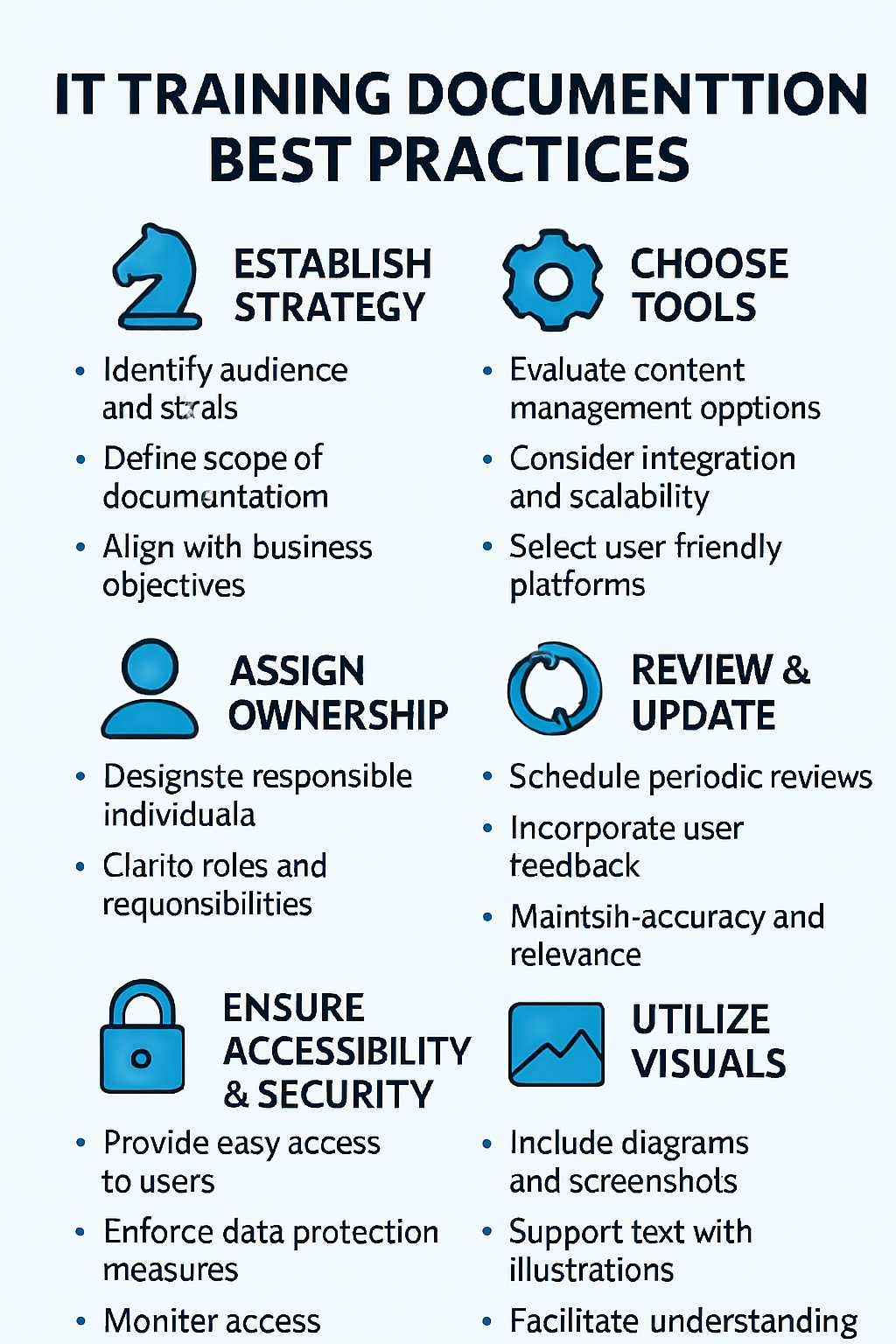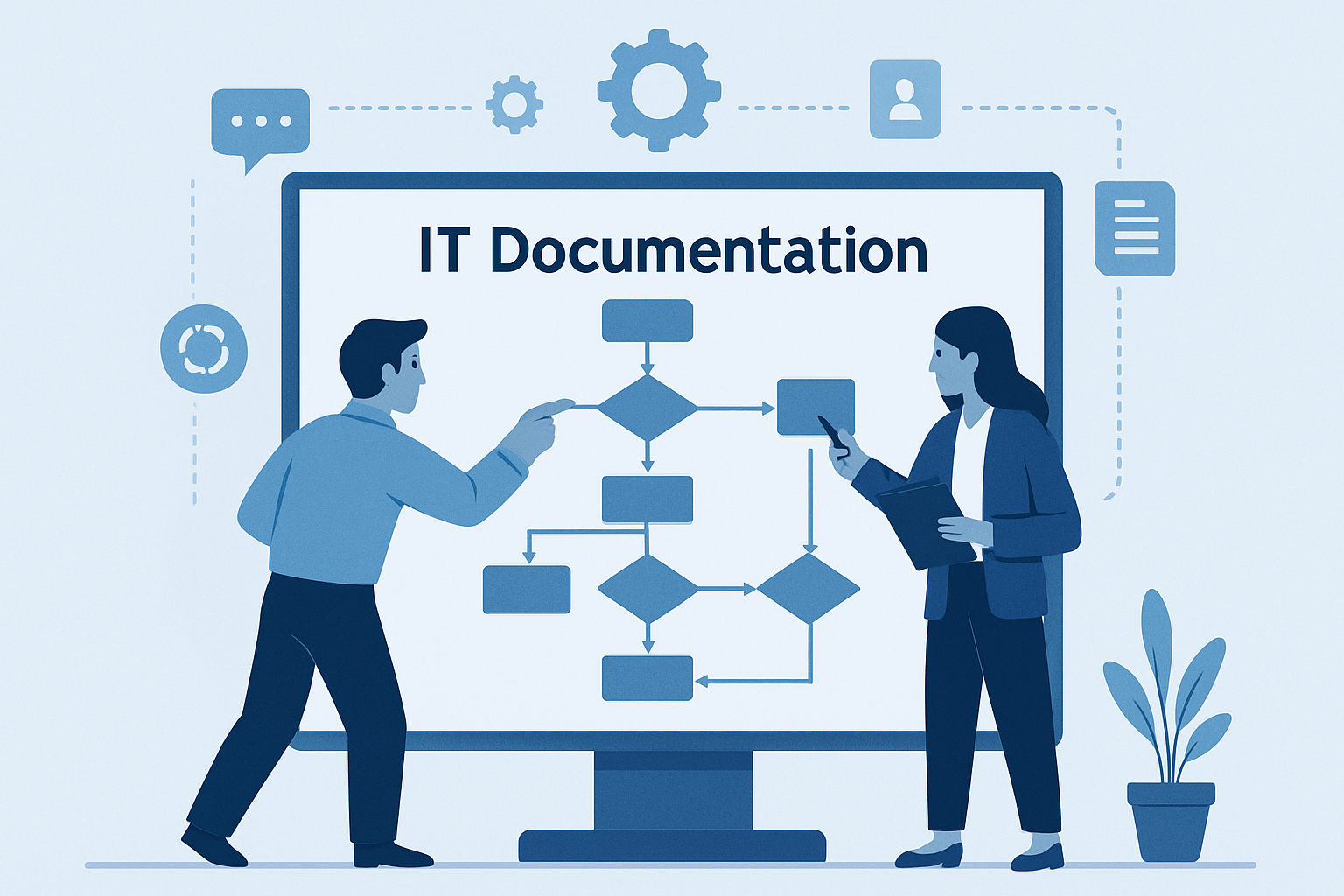
Hey there, fellow tech enthusiasts and knowledge sharers!
Have you ever found yourself drowning in a sea of outdated guides or struggling to onboard new team members efficiently?
If so, you’re not alone. In the fast-paced world of IT, effective training documentation isn’t just a nice-to-have; it’s an absolute necessity.
It’s the backbone of smooth operations, efficient knowledge transfer, and a truly empowered team.
I’ve seen firsthand how a well-documented process can transform a chaotic IT environment into a well-oiled machine.
It’s about more than just writing things down; it’s about creating a living, breathing resource that serves your team and your organization.
So, let’s dive into some of the best practices that can help you master the art of IT training documentation.
1. Laying the Foundation:
Establish a Clear Documentation Strategy and Governance
Before you even think about writing your first document, you need a solid plan.
Think of it like building a house; you wouldn’t start hammering nails without a blueprint, right?
The same goes for your IT documentation.
You need to determine what types of documentation are truly essential for your team.
Is it user manuals, system configurations, troubleshooting guides, or a combination of everything?
Once you know what you need, it’s crucial to define who is responsible for creating and maintaining each piece of documentation.
This isn’t a one-person job; it’s a collaborative effort.
And finally, how will this documentation be stored and accessed?
A centralized, easily searchable knowledge base is key to ensuring your team can find what they need, when they need it.
Without a clear strategy, your documentation efforts might end up scattered and ineffective.

2. Tools of the Trade: Choosing the Right Tools and Templates
Just as a carpenter needs the right tools, so do you when it comes to crafting effective IT documentation.
The market is flooded with options, from simple word processors to sophisticated knowledge management systems.
The key is to find what truly fits your organization’s unique needs and processes.
Consider factors like user-friendliness – if it’s too complicated, your team won’t use it.
Compatibility with your existing systems is also crucial; you don’t want to create more silos.
Look for features that can streamline the documentation process, such as version control, collaborative editing, and easy search functionalities.
And, of course, don’t forget to factor in the cost and any ongoing maintenance requirements.
The right tools can make your documentation efforts significantly more efficient and enjoyable.
3. Who Owns What? Assigning Ownership and Responsibilities
One of the biggest pitfalls in documentation is the lack of clear ownership.
When everyone is responsible, no one is responsible.
To ensure your IT documentation remains accurate and up-to-date, you need to appoint specific individuals with the necessary expertise and authority to create and maintain it.
This isn’t just about assigning tasks; it’s about empowering your team members to be the guardians of knowledge in their respective areas.
Clearly defining these roles and responsibilities is paramount.
Everyone should know what they are accountable for, and there should be a system in place to hold them to it.
This fosters a sense of ownership and ensures that your documentation doesn’t become a forgotten relic, gathering digital dust.
4. The Living Document: Regularly Reviewing and Updating Documentation
IT environments are constantly evolving. New software is implemented, systems are updated, and processes change.

This means your documentation can quickly become obsolete if it’s not regularly reviewed and updated.
Think of your documentation as a living organism;
it needs constant care and feeding to stay healthy and relevant.
Establish a regular review cycle – whether it’s quarterly, bi-annually, or annually – and stick to it.
Assign individuals the responsibility of conducting these reviews and making necessary updates.
And, perhaps most importantly, implement a robust version control system.
This ensures that everyone is always working with the most current information and prevents confusion caused by outdated guides.
A well-maintained documentation library is a powerful asset, but a neglected one can be a liability.
5. Accessibility and Security: Making Documentation Work for Everyone
What good is fantastic documentation if your team can’t access it, or worse, if it falls into the wrong hands?
Accessibility and security are two sides of the same coin when it comes to IT training documentation.
Your documentation needs to be easily searchable and user-friendly.
If your team has to jump through hoops to find a simple answer, they’ll quickly give up and resort to asking colleagues, which defeats the purpose of documentation.
At the same time, you must implement robust security measures.
This includes role-based access control, password protection, and encryption for sensitive information.
Secure remote access methods are also crucial in today’s distributed work environments.
Striking the right balance between accessibility and security ensures that your valuable knowledge is both protected and readily available to those who need it.
6. Speak Their Language: Clarity and Conciseness
Imagine trying to learn a new, complex IT system from a manual filled with jargon and convoluted sentences.
Frustrating, right? Effective IT training documentation is all about clarity and conciseness.
Use simple, straightforward language, and avoid technical jargon wherever possible.
If you must use technical terms, make sure they are clearly defined.
The goal is to make the content easy to understand for all readers, regardless of their technical expertise.
Break down complex processes into small, digestible steps.
Avoid missing steps or inaccuracies that could leave users confused or, worse, lead to errors.
Remember, the easier it is to understand, the more likely it is to be used.
7. A Picture is Worth a Thousand Words: Utilize Visuals and Interactive Elements
Let’s be honest, nobody wants to read a wall of text.
This is where visuals come in! Incorporating images, diagrams, screenshots, and even short videos can significantly enhance the effectiveness of your IT training documentation.
Visuals can explain complex concepts far more effectively than text alone.
Think about a network diagram versus a paragraph describing network topology – the diagram wins every time.
Interactive elements, such as clickable links to related content or embedded simulations, can also make the learning experience more engaging and effective.
Don’t be afraid to get creative and make your documentation visually appealing and easy to navigate.
Understanding the Different Types of IT Documentation
IT documentation isn’t a one-size-fits-all concept.
Different types serve different purposes, and understanding them is key to building a comprehensive knowledge base.
Here’s a quick rundown of the main categories:
Infrastructure Documentation: This covers the physical and virtual components of your IT environment, like servers, storage, networks, and diagrams.
It’s your blueprint for how everything connects and operates.
Operational Workflows: These documents detail the day-to-day processes and procedures, such as system maintenance, data backups, and software deployments.
They ensure consistency and efficiency in your IT operations.
Project-Based Documentation: Specific to IT projects, this includes goals, timelines, resources, and stakeholder information.
It’s vital for planning, executing, and controlling projects effectively.
Technical Support Information: This is your go-to for resolving common IT issues, featuring troubleshooting guides, FAQs, and knowledge base articles.
It empowers your support team to quickly diagnose and fix problems.
Technical Documentation: This provides in-depth information about the architecture, design, and operation of IT systems and applications, including system specifications and code documentation.
It’s primarily for IT professionals who design and maintain these systems.
User Documentation: Designed for end-users, this includes manuals, tutorials, and quick start guides.
Its purpose is to help users effectively utilize IT systems and applications with minimal assistance.
The Power of Well-Documented IT Training
In conclusion, mastering IT training documentation isn’t just about creating documents;
it’s about building a foundation for a more efficient, collaborative, and knowledgeable IT team.
By establishing a clear strategy, choosing the right tools,
assigning ownership,
regularly updating your content,
ensuring accessibility and security,
focusing on clarity, and embracing visuals,
you’re not just writing manuals – you’re empowering your team to excel.
So, what are you waiting for? Start implementing these best practices today and watch your IT operations transform.
Your team, and your future self, will thank you for it!
